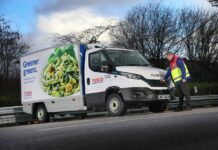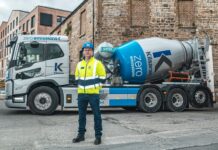Firms are putting increasing numbers of drivers through training for licences to operate vehicles because of stricter health and safety requirements to use specialist equipment, and to give themselves enough capacity to weather covid absences, according to RED Driver Risk Management.
Companies that have not put more employees through Category C licence training risk running out of drivers, RED DRM’s CEO Seb Goldin claimed.
 “We are seeing that for many jobs now, health and safety protocols mean specialist equipment needs to be used. For example, where once a ladder might have been adequate, now firms are required to use a cherry picker. It is certainly safer, but vehicles such as those need qualified drivers and so firms need to ensure they have enough capacity, or risk being unable to complete work because they can’t get the equipment to site,” he said.
“We are seeing that for many jobs now, health and safety protocols mean specialist equipment needs to be used. For example, where once a ladder might have been adequate, now firms are required to use a cherry picker. It is certainly safer, but vehicles such as those need qualified drivers and so firms need to ensure they have enough capacity, or risk being unable to complete work because they can’t get the equipment to site,” he said.
Added to which, employees exposed to covid and required to isolate can mean that firms run out of qualified drivers unexpectedly. RED DRM has seen a 125% increase in bookings for Category C licence courses in the past six months as companies recognise they are at risk of running out of drivers.
It’s an issue being particularly felt in the utility sector where the increase in mechanisation means more jobs can only be done with specialist machinery in order to meet health and safety requirements.
In order to counter this, companies need to recognise that having just one employee qualified to operate such machinery – generally falling under the Category C licence (vehicles 3.5 to 7.5 tonnes GVW) – is not enough and should ensure a second employee is trained in reserve.
Seb added: “All companies should have a pool of back-up drivers with qualifications to drive C/C1 vehicles as this gives them cover for illness, as well as covid isolation requirements and general staff turnover.
“In many cases in the rail and utility sector, if a vehicle cannot get to the job because of a lack of qualified driver, then the crew of workers cannot complete their job.
“Many of the vehicles involved are specialist equipment – welding vehicles, cherry pickers, etc, as well as staff welfare vehicles.”
Category C1 training allows employees to drive vehicles from 3.5 tonnes to 7.5 tonnes GVW. Drivers without the Category C1 entitlement are limited to driving vehicles up to 3.5 tonnes.















